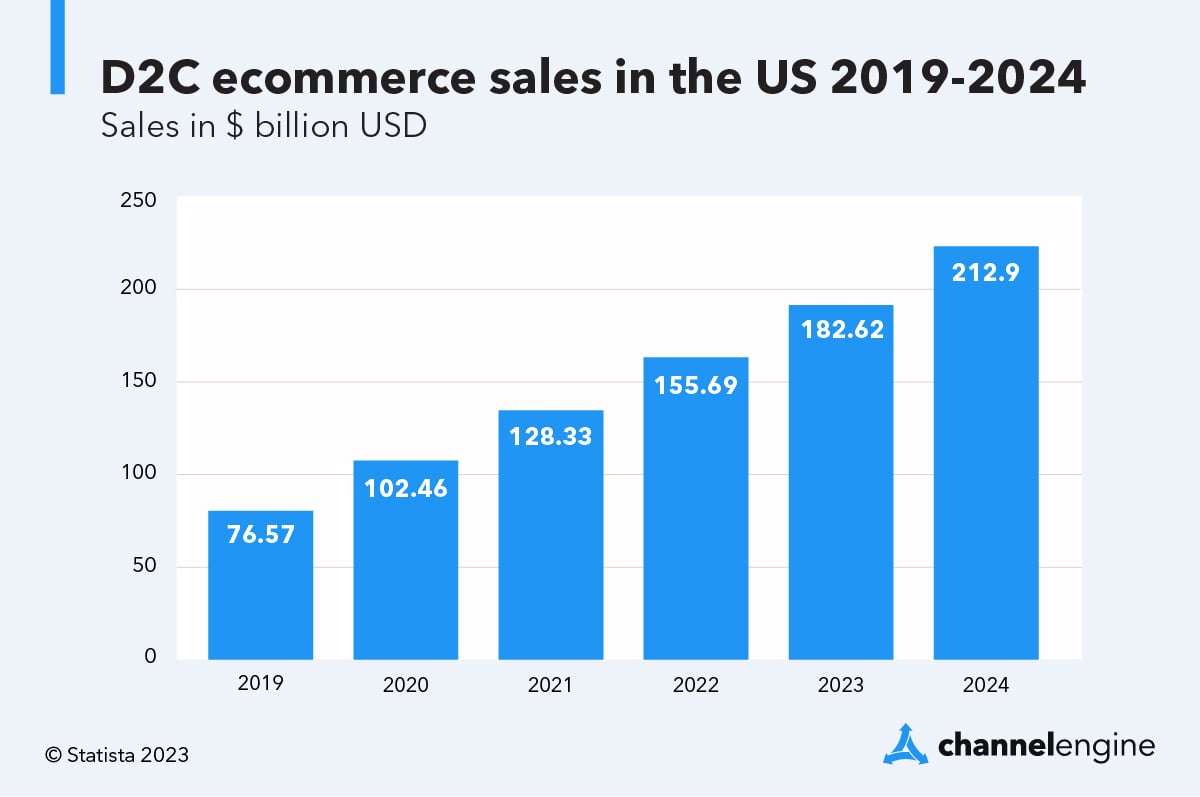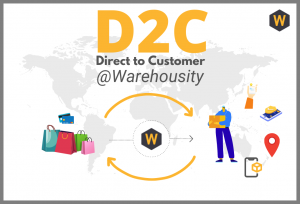The Ultimate Guide to Scaling Fast With a D2C Ecommerce Agency
Wiki Article
Unlocking the Secrets to Effective D2C Efficiency Advertising And Marketing Campaigns
Efficient D2C efficiency advertising projects hinge on a thorough understanding of the target market. Brand names need to not only set clear, quantifiable objectives but additionally craft ad creatives that resonate deeply with customers. Making use of data analytics can reveal valuable understandings. The actual difficulty exists in selecting the right marketing networks and continually optimizing strategies. As firms strive for consumer commitment, the approaches they utilize can greatly affect their success - D2C Agency. What strategies will confirm most efficient?Recognizing Your Target Audience
Exactly how can brand names efficiently get in touch with customers in a jampacked market? Recognizing the target market is important for brands seeking to stand out. This includes extensive study to recognize demographics, preferences, and discomfort points. By utilizing surveys, social networks analytics, and focus groups, brand names can collect important understandings that form their advertising and marketing strategies.A clear understanding of the audience enables brand names to customize messaging and item offerings to fulfill specific needs. Segmenting the target market into unique groups enables tailored marketing efforts, promoting a feeling of connection and commitment. Furthermore, brands can make use of behavior data to predict future buying practices and choices, promoting positive engagement.In an atmosphere filled with choices, a deep comprehension of the target market empowers brands to craft pertinent content and experiences, guaranteeing they resonate with customers. This fundamental expertise works as a springboard for reliable marketing campaigns that align with consumer assumptions and wishes.Establishing Clear Goals and Purposes
Setting clear goals and purposes is crucial for effective D2C performance marketing. D2C Performance Marketing. Developing Trick Efficiency Indicators (KPIs) allows companies to measure success and warranty positioning with overarching approaches. This emphasis on objective positioning not just improves marketing initiatives however likewise drives general business developmentDefine Trick Efficiency Indicators
Key Efficiency Indicators (KPIs) offer as necessary metrics for determining the success of Direct-to-Consumer (D2C) performance advertising and marketing initiatives. By developing clear KPIs, services can measure their advertising and marketing goals, enabling an organized approach to performance analysis. Typical KPIs in D2C campaigns consist of client acquisition cost, conversion rates, and return on ad invest, each giving unique understandings into campaign effectiveness. Furthermore, keeping track of metrics such as consumer life time worth and engagement rates can help marketers recognize patterns and areas for renovation. Setting these indicators enables companies to assess progression, make notified decisions, and optimize advertising strategies to improve overall efficiency. Inevitably, distinct KPIs are vital for lining up marketing campaigns with desired service end results in the competitive D2C landscape.Align Goals With Method
While straightening goals with technique is essential for any type of marketing campaign, it is specifically vital in the domain name of Direct-to-Consumer (D2C) performance marketing. Clear goals give a roadmap for projects, guaranteeing that all efforts are concentrated and quantifiable. D2C brands must establish certain, possible goals that reverberate with their target market, such as increasing customer purchase or improving brand loyalty. By integrating these goals into their general technique, online marketers can effectively assign resources and optimize projects for maximum impact. Additionally, on a regular basis evaluating and changing objectives in action to performance information enables agile marketing practices, ensuring that brand names continue to be affordable in a quickly developing industry. Ultimately, goal placement drives continual growth and success in D2C performance advertising and marketing.Crafting Compelling Ad Innovative
In the domain of D2C performance advertising and marketing, crafting engaging advertisement imaginative is vital for capturing audience attention. Making use of visual narration techniques can efficiently convey brand name narratives, while strategies that promote emotional links improve audience involvement. Together, these methods can significantly elevate a project's impact and drive customer action.Aesthetic Narration Methods

Emotional Link Strategies
What drives consumers to involve with a brand on an emotional degree? Psychological connection strategies play an essential role in crafting engaging ad imaginative that reverberates with audiences. By leveraging storytelling, brands can evoke sensations of empathy, joy, or nostalgia, producing an unforgettable experience. Making use of real-life circumstances and relatable characters allows customers to see themselves within the narrative, fostering a feeling of belonging. Additionally, incorporating genuine reviews and user-generated content can boost count on and reputation. Aesthetic components, such as shade and images, likewise contribute to the emotional tone, influencing feedbacks and assumptions. Inevitably, brand names that prioritize emotional engagement not just capture focus however also grow long-term connections, driving loyalty and encouraging repeat acquisitions in the competitive D2C landscape.Leveraging Information and Analytics
While many brand names identify the significance of information fit marketing methods, leveraging data and analytics efficiently can establish direct-to-consumer (D2C) companies apart in an affordable landscape. By utilizing client data, D2C brand names can gain insights into consumer habits, choices, and purchasing patterns. This details enables them to customize their marketing initiatives, guaranteeing personalized experiences that resonate with their target audience.Moreover, progressed analytics tools enable D2C firms to track essential efficiency indications (KPIs) in actual time, enhancing campaigns on the fly. By evaluating metrics such as conversion rates, client acquisition expenses, and return on ad invest, brand names can assign resources much more efficiently and refine their messaging.In addition, data-driven division aids recognize particular niche markets, enabling targeted promotions that increase involvement and sales. Inevitably, making use of analytics and information not only enhances advertising performance yet also fosters long-term customer connections, solidifying a brand name's standing in the D2C sector.Picking the Right Advertising Channels
Determining which marketing channels to prioritize can greatly impact a D2C brand's success. Each channel offers distinct benefits and reaches distinct target markets, making it important for brands to align their strategies with their target demographics. Social media systems, such as Instagram and Facebook, offer chances for engaging visuals and straight communication, appealing especially to younger consumers. Email advertising stays a powerful tool for tailored communication, driving consumer retention and loyalty.Additionally, internet search engine advertising allows brand names to capture intent-driven website traffic, drawing in prospective customers proactively looking for items. Influencer partnerships can amplify reach and trustworthiness, particularly in niche markets. Brand names must additionally take into consideration the cost-effectiveness of each network, measuring prospective returns versus their advertising budget plans. By thoroughly choosing and incorporating these channels, D2C brands can produce a efficient and natural advertising approach that reverberates with their target market while enhancing their resources for maximum influence.A/B Evaluating for Continuous Renovation
After choosing appropriate advertising and marketing channels, D2C brand names can enhance their performance through A/B testing. This technique allows brands to contrast two variations of a marketing possession-- such as an email, landing web page, or advertisement-- to figure out which performs much better. By assessing metrics like conversion rates, click-through rates, and customer interaction, brand names can make data-driven decisions that optimize their campaigns.A/ B testing promotes a culture of constant renovation, encouraging brands to trying out different elements, such as headlines, images, or contacts us to activity. This repetitive procedure not just enhances user experience but also maximizes roi. Importantly, A/B testing ought to be methodical, concentrating on one variable each time to separate its influence properly. As D2C brand names accept this method, they can refine their D2C & Ecommerce Performance Marketing Agency strategies, ultimately leading to more reliable advertising and marketing campaigns and improved customer acquisition outcomes.Structure Customer Loyalty and Retention
Building consumer commitment and retention is essential for D2C brand names aiming to sustain long-lasting success in an affordable marketplace. Establishing a solid link with customers enhances brand name loyalty and motivates repeat acquisitions. Efficient methods include customized advertising and marketing, commitment programs, and extraordinary customer care. By using data analytics, brands can customize interactions and deals to meet specific consumer choices, promoting a feeling of belonging.Moreover, constant engagement with social media sites and e-mail campaigns keeps the brand top-of-mind. Transparency in operations, such as moral sourcing and sustainability methods, can better boost trust and commitment. Motivating user-generated material and testimonials additionally empowers customers, making them feel valued and valued. Eventually, investing in consumer experiences and developing an area around the brand can meaningfully enhance retention prices. As loyalty enhances, brand names take advantage of lowered procurement prices and increased customer lifetime value, solidifying their position out there.Frequently Asked Concerns
What Spending plan Should I Allot for My D2C Advertising And Marketing Campaigns?
Determining an ideal allocate D2C advertising projects includes assessing target market dimension, system expenses, industry standards, and preferred reach. An adaptable method permits modifications based on project efficiency and progressing market problems.Exactly how Frequently Should I Revitalize My Ad Creative?

What Are Usual Blunders in D2C Performance Marketing?
Common errors in D2C performance advertising consist of overlooking audience segmentation, stopping working to examine project information, irregular messaging throughout networks, neglecting mobile optimization, and not evaluating different creatives, which can impede general project performance and development.Exactly How Can I Gauge Brand Name Recognition From My Campaigns?
Measuring brand awareness from campaigns involves evaluating metrics such as reach, perceptions, involvement prices, and study responses. Tracking social media discusses and internet site web traffic can also offer insights right into the performance of advertising efforts.Should I Use Influencers for My D2C Advertising And Marketing Strategy?
The choice to make use of influencers in a marketing approach relies on target market placement and campaign objectives. Influencers can enhance reach and integrity, but effectiveness varies based upon sector and audience engagement degrees. Careful choice is important. By using studies, social media analytics, and emphasis teams, brand names can gather beneficial understandings that form their advertising and marketing strategies.A clear understanding of the target market allows brand names to tailor messaging and product offerings to satisfy details needs. In addition, brands can utilize behavior data to anticipate future buying habits and choices, helping with aggressive engagement.In an atmosphere saturated with alternatives, a deep comprehension of the target audience encourages brands to craft pertinent material and experiences, guaranteeing they reverberate with consumers. D2C brand names need to establish details, achievable objectives that resonate with their target audience, such as boosting client purchase or boosting brand loyalty. By examining metrics like conversion prices, click-through rates, and client involvement, brands can make data-driven choices that optimize their campaigns.A/ B screening fosters a society of continuous renovation, encouraging brand names to experiment with various elements, such as headings, pictures, or calls to action. By utilizing data analytics, brands can tailor interactions and deals to meet individual client preferences, promoting a feeling of belonging.Moreover, regular involvement via social media and email projects keeps the brand name top-of-mind.Report this wiki page